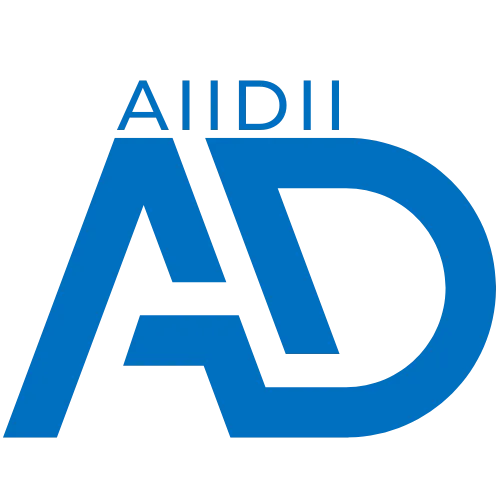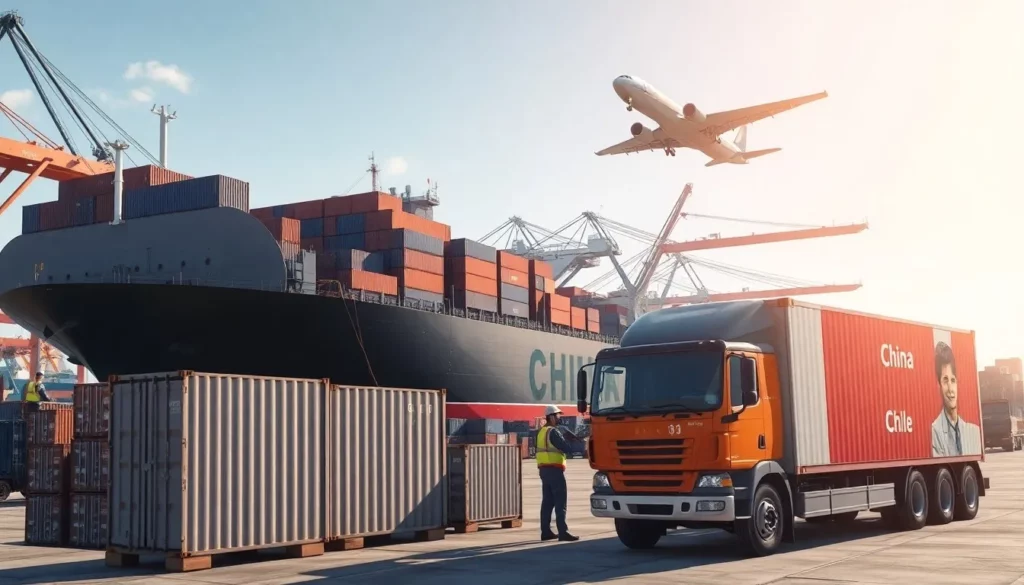Importing goods from China to Chile can transform your business by cutting costs and streamlining your supply chain. This guide equips you with everything you need to master freight forwarding, from selecting shipping methods to navigating customs and managing risks. You’ll learn how to choose carriers, calculate total landed costs, and optimize your import strategy with confidence.
Most Important: Freight forwarding options for China-to-Chile routes include ocean freight, air freight, and express courier services, with transit times ranging from 3-5 days for express shipping to 30-45 days for sea freight, depending on your cargo needs and budget.

Selecting the Best Shipping Method for China-to-Chile Routes
Choosing the right shipping method hinges on your cargo’s size, urgency, and budget. Each option—ocean freight, air freight, or express courier—offers unique benefits tailored to specific business needs.
Ocean Freight: Cost-Effective for Bulk Shipments
Ocean freight is your go-to for large, non-urgent shipments, offering unmatched savings for high-volume cargo. It’s versatile, handling everything from standard goods to specialized shipments.
Best-Use Cases: Large Retailers and Manufacturers
Ocean freight shines for large retailers shipping container loads, manufacturers importing machinery or raw materials, or small businesses consolidating orders. For example, a Chilean furniture retailer might use ocean freight to import a full container of tables, leveraging refrigerated containers for wood finishes or break bulk for oversized items.
Full Container Load (FCL): Cost Savings for High Volumes
With FCL, you get exclusive use of a container. Current rates from China to Chilean ports like Valparaíso or San Antonio range from $2,600 for a 20-foot container to $3,500 for a 40-foot high cube. FCL is cost-effective for shipments exceeding 15 cubic meters.
Less Than Container Load (LCL): Flexible for Smaller Shipments
LCL lets you share container space, ideal for shipments under 15 cubic meters. Rates typically range from $2,250 to $3,790 per cubic meter, perfect for e-commerce businesses or startups managing smaller orders.
Specialized Sea Freight: Tailored for Unique Cargo
Specialized options like refrigerated containers for perishables, roll-on/roll-off (Ro-Ro) for vehicles, or break bulk for oversized cargo meet unique needs. Plan ahead for documentation, as these shipments often require extra paperwork.
Key Maritime Routes and Transit Times
Major routes connect Shanghai, Ningbo, and Shenzhen to Valparaíso, San Antonio, and Iquique, with transit times of 30-45 days. Routes often include stops at ports like Busan, Manzanillo, or Callao, so confirm schedules with your freight forwarder.
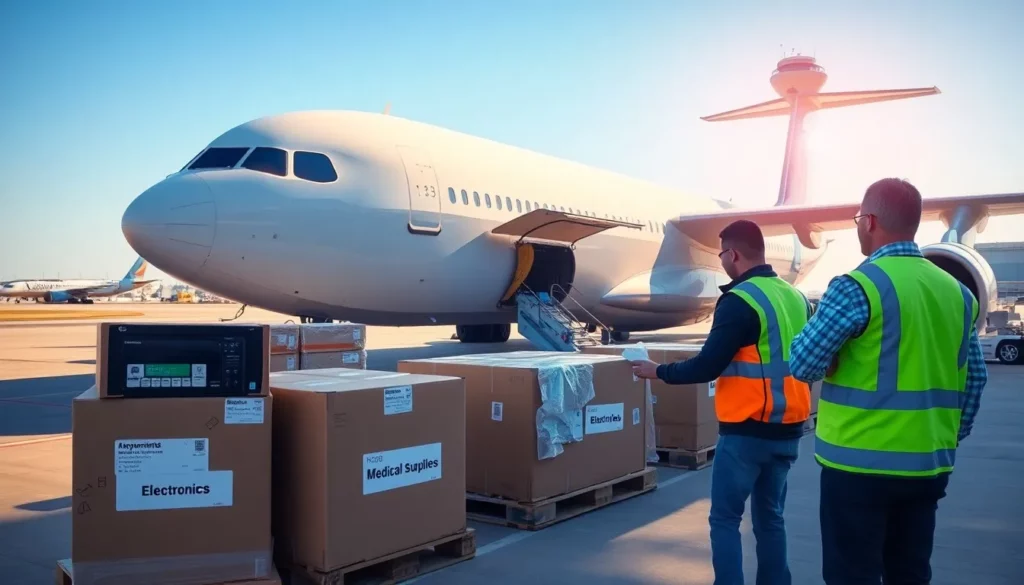
Air Freight: Speed for High-Value Goods
Air freight is your solution for time-sensitive, high-value shipments, balancing speed with cost for urgent deliveries.
Best-Use Cases: Electronics and Medical Supplies
Air freight is ideal for electronics, medical supplies, or fashion apparel where speed to market is critical. For instance, a Santiago-based medical supplier might air-ship diagnostic equipment to meet urgent hospital demand.
Traditional Air Cargo: Reliable for Larger Shipments
Traditional air cargo suits shipments over 100-150kg, with rates from $7.00 to $7.60 per kilogram. It offers dedicated space on scheduled flights, ensuring predictable delivery.
Consolidated Air Freight: Savings for Multiple Orders
Consolidated air freight combines smaller shipments for better rates while maintaining faster transit than ocean freight. This works well for businesses juggling multiple product lines.
Key Air Routes and Transit Times
Flights from Beijing (PEK), Shanghai (PVG), or Guangzhou (CAN) to Santiago (SCL) take 7-10 days, including customs clearance. Multiple weekly flights give you scheduling flexibility.

Express Courier Services: Fast and Simple for Small Shipments
Express couriers offer door-to-door convenience, perfect for small, urgent shipments or samples.
Best-Use Cases: E-commerce and Documents
Express services are ideal for e-commerce brands shipping directly to customers or businesses needing urgent documents. For example, a Chilean startup might use express shipping to send product samples to a trade show.
Comparing Major Providers: DHL, FedEx, and UPS
DHL, FedEx, and UPS offer similar services, with rates from $6 to $8 per kilogram. Each provides tracking, customs clearance, and delivery confirmation for peace of mind.
Express Model: All-in-One Convenience
Express shipping bundles pickup, transport, customs, and delivery into one service, simplifying logistics. It’s perfect if you want minimal coordination.
Transit Time Expectations
Express couriers deliver in 3-7 days, the fastest option available. Many providers offer money-back guarantees for delays, ensuring reliability.
Comparing Shipping Methods: A Quick Reference
To choose the best method, weigh cost, speed, and shipment size. Here’s a snapshot:
| Method | Cost (Per Kg/CBM) | Transit Time | Best for Shipments |
|---|---|---|---|
| Express Courier | $6–8/kg | 3–7 days | Under 100 kg |
| Air Freight | $7.00–7.60/kg | 7–10 days | 100–500 kg |
| Ocean Freight (FCL) | $2,600–$3,500/container | 30–45 days | Over 15 CBM |
| Ocean Freight (LCL) | $2,250–$3,790/CBM | 30–50 days | Under 15 CBM |
Tips: Choose express for small, urgent shipments, air freight for high-value goods, and ocean freight for bulk to optimize costs.
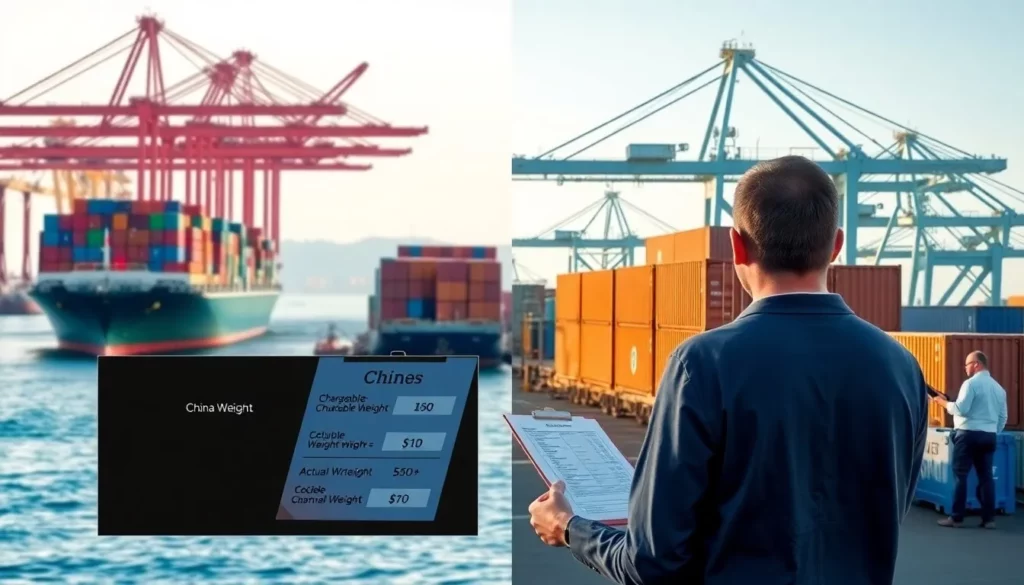
Breaking Down China-to-Chile Shipping Costs
Understanding all cost components helps you budget accurately and compare freight forwarders effectively.
Core Cost Principles for All Methods
Certain factors shape costs across all shipping modes, impacting your bottom line.
Chargeable Weight: Actual vs. Volumetric
Carriers charge based on the higher of actual weight or volumetric weight (length × width × height ÷ 5000 for air, ÷ 6000 for ocean). For example, a bulky but light shipment of pillows may incur higher costs due to its volume.
HS Codes: Driving Duties and Compliance
Harmonized System (HS) codes classify your goods, affecting duties and regulations. Accurate codes ensure correct duty calculations and compliance with Chilean import rules.

Ocean Freight Costs Explained
Ocean freight involves multiple fees beyond the base rate, so let’s break it down.
FCL Costs: Base Rates and Surcharges
FCL rates include base freight ($2,600 for 20-foot, $3,500 for 40-foot containers), Bunker Adjustment Factor (BAF) for fuel, and Terminal Handling Charges (THC) at both ports.
LCL Costs: Per Cubic Meter
LCL pricing uses weight or volume (W/M), ranging from $2,250 to $3,790 per cubic meter. Seasonal demand can affect rates, so check with your forwarder.
China-Side Charges
Expect export clearance fees, trucking to port, documentation ($40-100 per shipment), and container handling ($180-300 per container).
Chile-Side Charges
Port fees, drayage to your warehouse, and customs clearance add up, with Terminal Handling Charges typically $180-300 per container.

Air Freight Costs Explained
Air freight costs vary by weight, route, and season, with several components to consider.
Air Cargo Rates
Rates decrease at weight breaks (+45kg, +100kg, +300kg), ranging from $7.00-7.60 per kilogram. Consolidating shipments can unlock better rates.
Ancillary Charges
Fuel Surcharges (FSC), Security Surcharges (SSC), and handling fees fluctuate based on market conditions, so factor these into your budget.
Last-Mile Delivery
Airport-to-door services include customs clearance and ground transport, adding to costs but simplifying logistics.

Express Courier Costs
Express pricing is straightforward but includes potential add-ons.
All-in-One Rate
Rates ($6-8 per kilogram) cover pickup, transport, customs, and delivery, making budgeting easier.
Additional Fees
Remote area deliveries or oversized packages may incur extra charges, so confirm with your carrier.
Total Landed Cost: The Full Picture
Your total landed cost includes all expenses from supplier payment to delivery, ensuring accurate financial planning.
Calculating CIF Value
Chilean customs use Cost, Insurance, and Freight (CIF) to calculate duties and taxes. This value includes your goods’ cost, insurance, and freight charges.
Import Duties and VAT
Chile levies a 6% duty on most imports, plus 19% VAT on the CIF value plus duties. Imports under USD 41 no longer enjoy VAT exemptions.
China-Chile FTA Benefits
The China-Chile Free Trade Agreement eliminates duties on 97% of goods. Ensure a valid Certificate of Origin to claim these savings.
Additional Costs
Cargo insurance (0.1-0.3% of value), customs brokerage ($80-150 per shipment), and bank fees impact your total costs. Factor these in early.
Best Practices: Always calculate total landed costs before shipping to avoid surprises and ensure profitability.
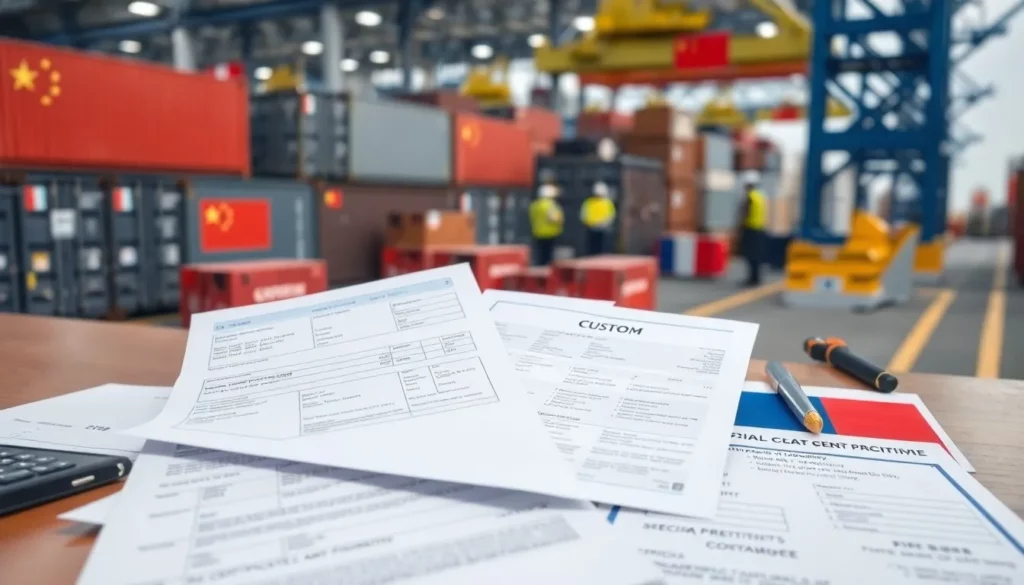
China-Chile Customs and Regulations
Mastering customs processes prevents delays and penalties, keeping your supply chain smooth.
Essential Documentation Checklist
Accurate paperwork is critical for seamless customs clearance.
- Commercial Invoice: Include product descriptions, HS codes, Incoterms, currency, and unit values. Errors here can inflate duties or delay clearance.
- Packing List: Must match the invoice and cargo exactly to avoid inspections.
- Bill of Lading/Air Waybill: Acts as your transport contract and cargo release document.
- Certificate of Origin: Proves FTA eligibility for duty-free treatment.
- Special Permits: Required for regulated goods like food, cosmetics, or pharmaceuticals.
Important Warnings: Inaccurate or incomplete documents can trigger customs inspections, delaying your shipment by days or weeks.

Chilean Customs Clearance Process
Follow these steps to ensure efficient clearance.
- Pre-Arrival: Submit cargo manifests electronically before arrival to start pre-clearance.
- Customs Declaration (DIN): Use a licensed broker for shipments over USD 1,000; smaller shipments may qualify for simplified processing.
- Inspection: Customs uses risk-based checks, either physical or documentary. Good compliance history reduces inspection likelihood.
- Duty/Tax Payment: Pay via authorized banks or electronic systems before cargo release.
- Prohibited Goods: Check restrictions on agricultural products, weapons, or hazardous materials to avoid issues.
Packaging and Labeling Requirements
Proper packaging and labeling ensure safety and compliance.
- ISPM 15: Wood packaging must be heat-treated or fumigated with ISPM 15 markings to avoid pest-related delays.
- Dangerous Goods: Comply with IATA (air) or IMDG (sea) regulations for hazardous materials, including proper documentation.
- Labeling: Include handling instructions, weight, and destination details to prevent damage or delays.
Tips: Clear labeling reduces handling errors, especially for fragile or high-value goods.
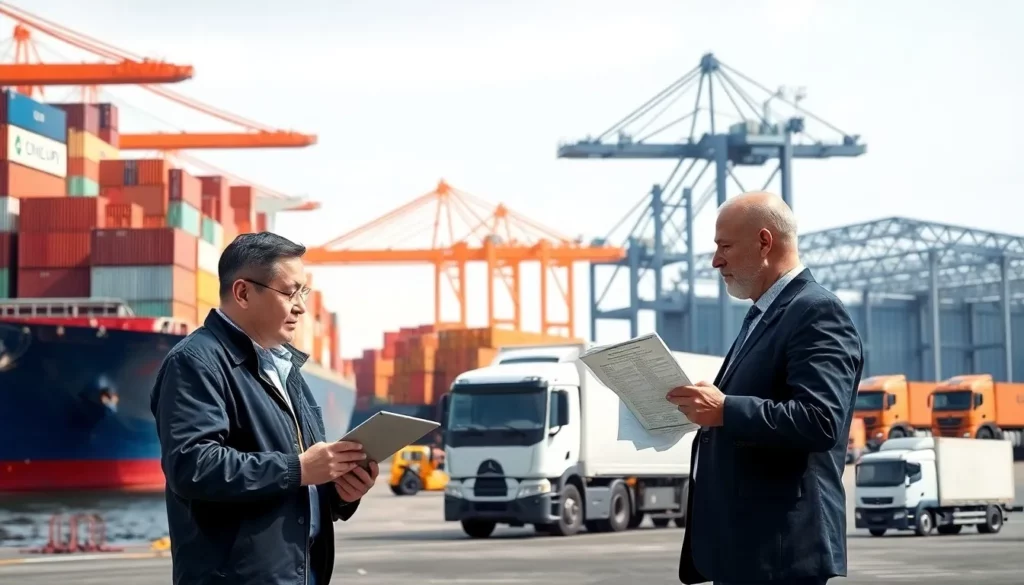
Optimizing Your China-Chile Supply Chain
Advanced strategies help you cut costs, mitigate risks, and boost efficiency.
Choosing Incoterms
Your Incoterms choice shapes cost, control, and risk allocation.
| Incoterm | Logistics Responsibility | Cost Control | Risk Transfer Point | Useful For | Key Differences |
|---|---|---|---|---|---|
| EXW | Buyer (from seller’s door onward) | Highest (buyer) | At seller’s premises | Experienced importers | Buyer handles all transport, export, import, insurance |
| FOB | Seller (to port of shipment), Buyer (from port) | High (buyer from port) | When goods loaded on board at export port | Buyers managing shipping | Seller handles export & loading; buyer arranges main transport |
| CIF | Seller (to destination port), Buyer (from port) | Moderate | When goods loaded on board at export port | Newer importers | Seller pays for sea freight & insurance to port; buyer clears import |
| DAP | Seller (to named destination place) | Lower | When goods arrive at destination (before unloading) | Importers seeking simplicity | Seller arranges all transport except import clearance/duties |
| DDP | Seller (all the way to buyer’s door, incl. duties & taxes) | Lowest (buyer) | When goods are placed at buyer’s premises, cleared for import | Importers wanting “door-to-door” service | Seller handles everything: delivery, customs, duties, and taxes |
Risk Transfer: Each Incoterm defines when risk shifts from seller to buyer, impacting insurance needs.
Cargo Insurance
Insurance protects against loss, damage, or theft during transit.
- Why It’s Needed: Carrier liability is minimal, often covering only a fraction of your cargo’s value.
- Coverage Types: All-Risk (Clause A) offers broad protection; Named Perils (Clause C) covers specific risks.
- Premiums and Claims: Premiums are 0.1-0.3% of CIF plus 10%. File claims promptly with proper documentation.
Warehousing and Distribution
Smart warehousing reduces costs and improves delivery.
- Consolidation Hubs: Use Shenzhen or Shanghai hubs to combine shipments, lowering LCL costs.
- Bonded Warehousing: Defer duties in Chilean bonded warehouses, ideal for seasonal inventory.
- Final-Mile Delivery: Plan direct-to-warehouse or retail distribution to optimize costs and timing.
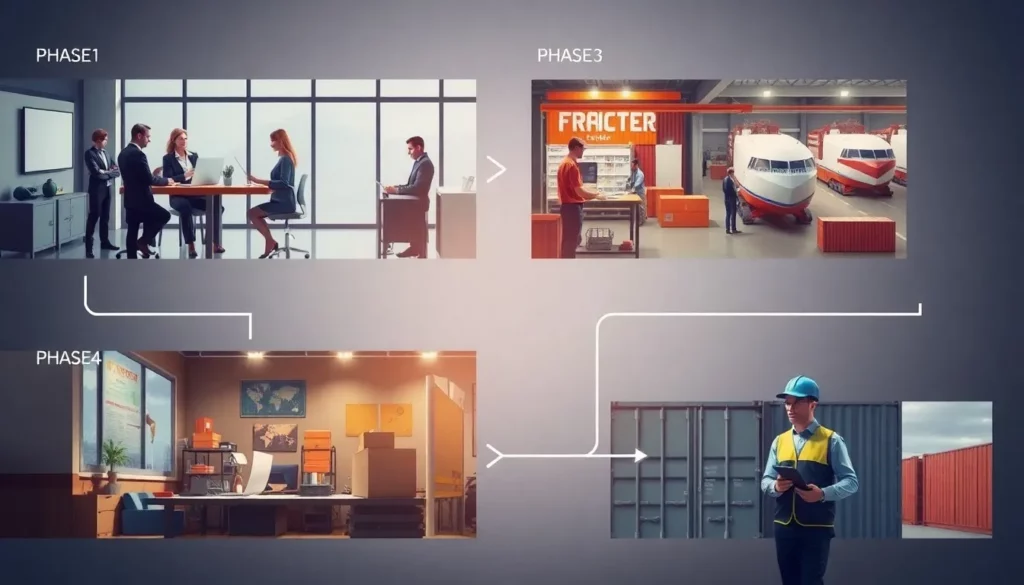
Step Step-by-Step Guide to Managing Your Shipment
Follow this roadmap to execute your shipment flawlessly.
Phase 1: Planning and Supplier Vetting
- Align with Suppliers: Sync production and cargo-ready dates to avoid warehousing fees. For example, a clothing importer might coordinate with a supplier to ship just as production completes.
- Supplier Checks: Verify credentials, production capacity, and export licenses to ensure reliability.
Phase 2: Selecting a Freight Forwarder
- Evaluation Criteria: Prioritize forwarders with China-Chile experience, strong networks, and verified testimonials.
- Freight Quotes: Request detailed quotes covering all fees for accurate budgeting.
- Red Flags: Avoid forwarders with suspiciously low rates or poor communication.
Phase 3: Booking and Tracking
- Booking: Provide complete cargo details and confirm terms in writing.
- Tracking: Use digital platforms for real-time updates and documentation management.
Phase 4: Arrival and Delivery
- Customs Coordination: Work with brokers to prepare documents before arrival.
- Last-Mile Planning: Align delivery with your warehouse’s schedule and equipment.
- Post-Shipment Audit: Review costs and performance to identify savings and improve future shipments.
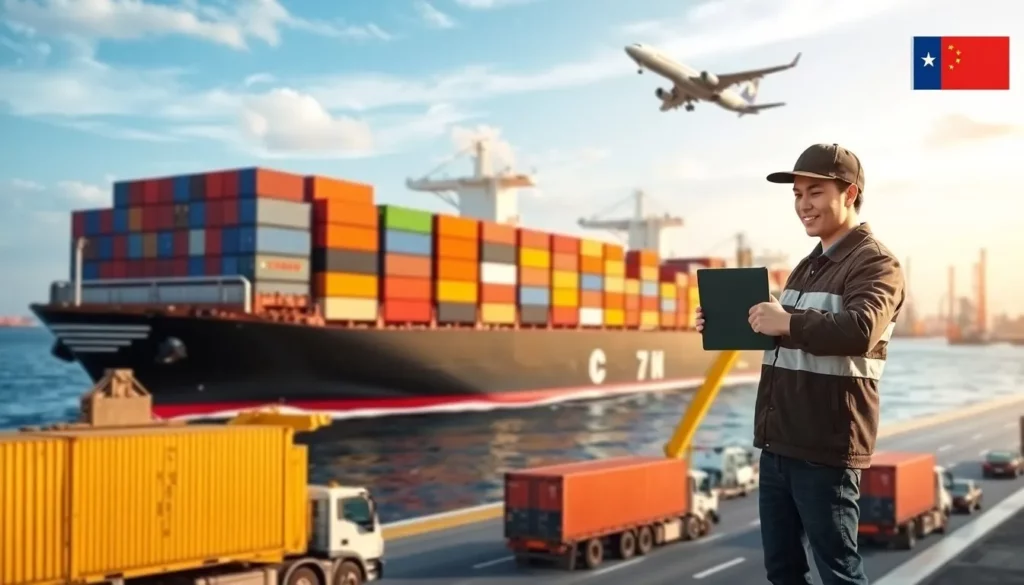
Building a Resilient China-Chile Supply Chain
Mastering shipping from China to Chile means balancing cost, speed, and compliance. Ocean freight offers savings for bulk, air freight ensures speed for high-value goods, and express couriers simplify small shipments. Focus on accurate documentation, leverage the China-Chile FTA for duty savings, and choose experienced forwarders to streamline your operations. For tailored solutions, consult freight forwarding experts to craft a strategy that fits your business needs.
Frequently Asked Questions (FAQs)
1. What’s the best way to cut shipping costs from China to Chile?
Consolidate shipments and optimize volume—FCL is cost-effective above 15 cubic meters, while LCL suits smaller loads.
2. How does the China-Chile FTA impact duties?
It eliminates duties on 97% of goods with a valid Certificate of Origin, bypassing the standard 6% duty.
3. What documentation differs for sea vs. air freight?
Both need invoices, packing lists, and transport documents, but air freight may require extra security or dangerous goods paperwork.
4. How far in advance should I book during peak seasons?
Book 2-3 weeks early during Chinese New Year, Golden Week, or Christmas to secure space and avoid high rates.
5. What are the risks of supplier-managed CIF shipping?
CIF may include freight markups, limit forwarder choice, and lead to slower shipping, reducing your control.
